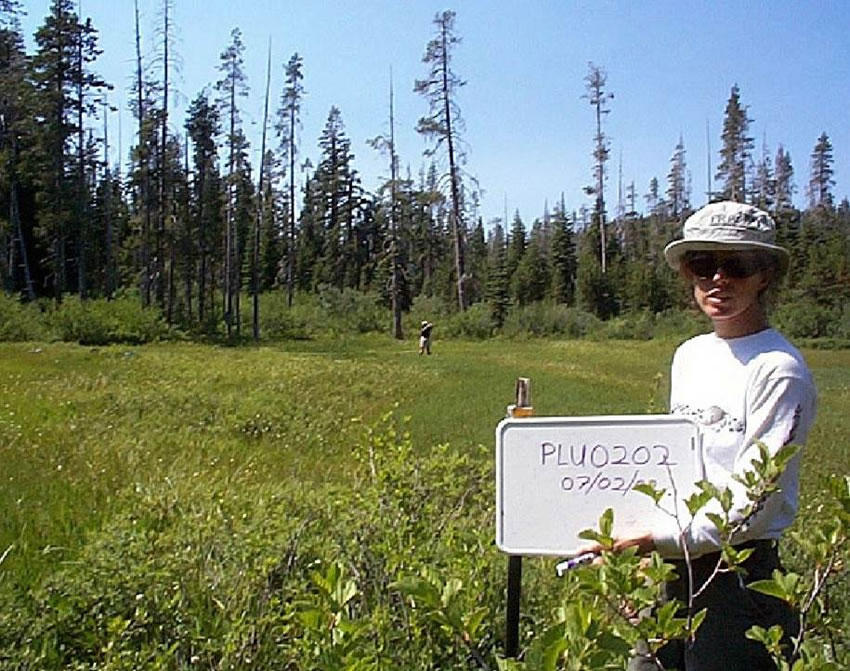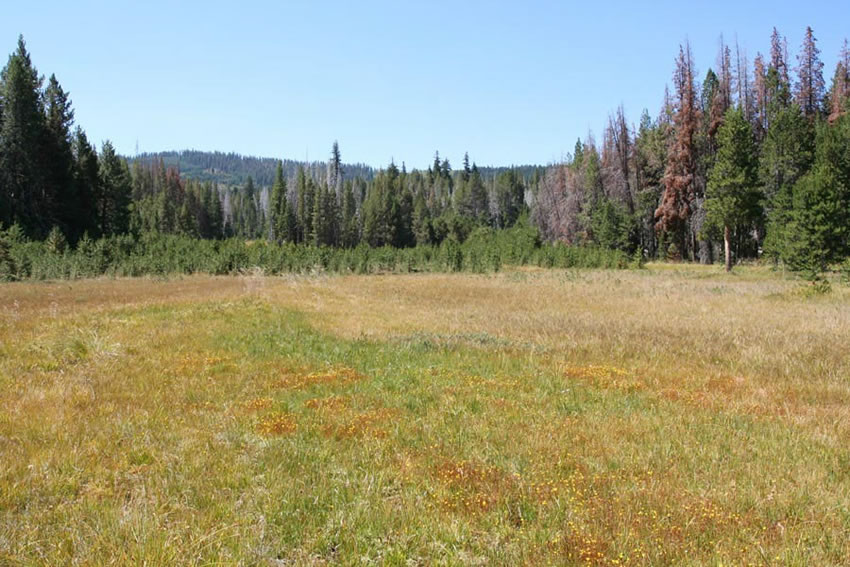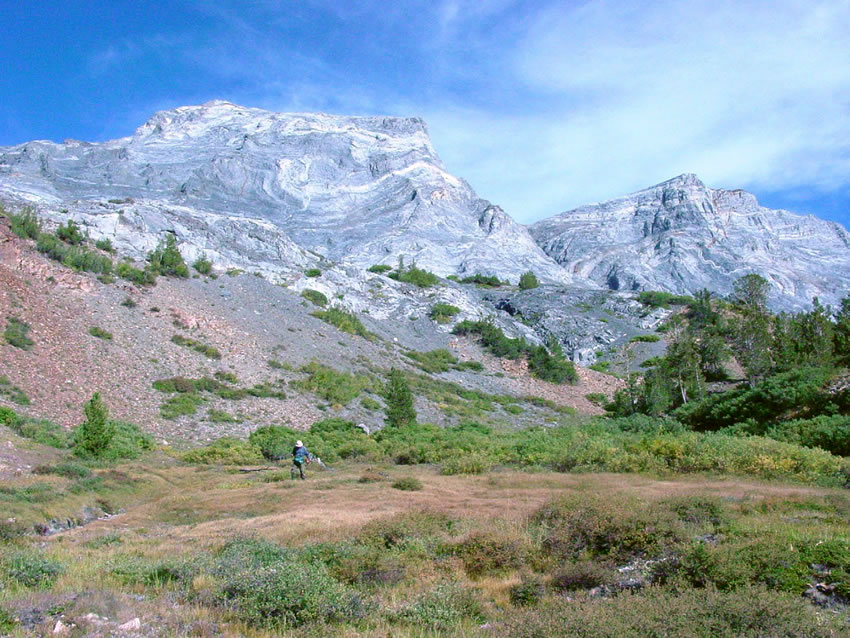Rich Fens and Poor Fens
Water Chemistry and Bedrock
Because fens are predominately groundwater fed, the water chemistry of a fen habitat is largely determined by the bedrock of the entire watershed. Granitic rocks produce low pH waters, while limestone and volcanic rocks produce water with a higher pH. In glaciated areas, the bedrock may be blanketed by till, alluvium, and other deposits that have an influence on water flow paths and chemistry.
Regional differences in groundwater chemistry are attributed to regional differences in the physical characteristics of the bedrock which is indicated by a high variation in pH in forests in California. Some forested areas of California have largely volcanic substrates in the southern Cascade Range and others have granitic substrates in the southern Sierra Nevada. Others such as the northern Sierra Nevada have considerable heterogeneity in the physical characteristics of the bedrock.
Classifying Fens by pH
There is an existing practice of classifying fens by their pH. Mineral ions are more readily available to plants as the pH increases because higher pH values are driven by higher ion concentrations.
Poor Fens
Poor fens have the lowest pH levels, pH of 4.5 to 5.5. They are poor in both species diversity and in mineral ions. They are poor in base cations with little or no alkalinity. Poor fens are dominated by Sphagnum and Drepanocladus mosses. Vascular plants may be present as scattered individuals rather than as a dominant cover.
 A poor fen (pH = 5.2). Graminoids and shrubs that are obligate wetland species dominate the vegetation. The water table is near the surface with very little exposed peat. Note alder (Alnus sp.) in the foreground. Silver Lake fen, Plumas National Forest, July 2, 2002. Photo by Dave Weixelman.
A poor fen (pH = 5.2). Graminoids and shrubs that are obligate wetland species dominate the vegetation. The water table is near the surface with very little exposed peat. Note alder (Alnus sp.) in the foreground. Silver Lake fen, Plumas National Forest, July 2, 2002. Photo by Dave Weixelman.
 Close-up of a poor fen (pH = 5.2). Note extensive moss cover. Photo by Dave Weixelman.
Close-up of a poor fen (pH = 5.2). Note extensive moss cover. Photo by Dave Weixelman.
Moderately Rich Fens
Moderately rich fens are slightly acid to neutral pH, 5.5-6.9. They have a low to moderate alkalinity. There is a ground layer of brown mosses of Drepanocladus, Philonotis and Sphagnum. In addition, a dense cover of sedges, Carex, may dominate the fen.
 A moderate-rich fen (pH = 6.2). The sedges that are present are obligate wetland species. The water table is near the surface and there is very little exposed peat. Mason fen, Tahoe National Forest, August 24, 2007. Photo by Dave Weixelman.
A moderate-rich fen (pH = 6.2). The sedges that are present are obligate wetland species. The water table is near the surface and there is very little exposed peat. Mason fen, Tahoe National Forest, August 24, 2007. Photo by Dave Weixelman.
 Close-up of a moderate-rich fen (pH = 6.2) Note the mix of moss, litter, and vascular plant cover. Mason fen, Tahoe National Forest. Photo by Dave Weixelman.
Close-up of a moderate-rich fen (pH = 6.2) Note the mix of moss, litter, and vascular plant cover. Mason fen, Tahoe National Forest. Photo by Dave Weixelman.
Extremely Rich Fens
Extremely rich fens have a basic pH above 6.9. They have a high concentration of base cations and high alkalinity. These fens are generally covered with brown mosses of Drepanocladus and Philonotis. Meesia triquetrum is considered an indicator of rich fens having a high pH and calcium concentrations. Hanging Fen is a sloping fen with a bench.
 Hanging Fen, an extreme rich fen (pH = 7.9) in the Convict Creek Basin, California. The sedges that are present are obligate wetland species. Photo by David Cooper.
Hanging Fen, an extreme rich fen (pH = 7.9) in the Convict Creek Basin, California. The sedges that are present are obligate wetland species. Photo by David Cooper.
 Close-up of Scirpus pumilus an extreme rich fen indicator in Hanging Fen (pH = 7.9). Photo by David Cooper.
Close-up of Scirpus pumilus an extreme rich fen indicator in Hanging Fen (pH = 7.9). Photo by David Cooper.

